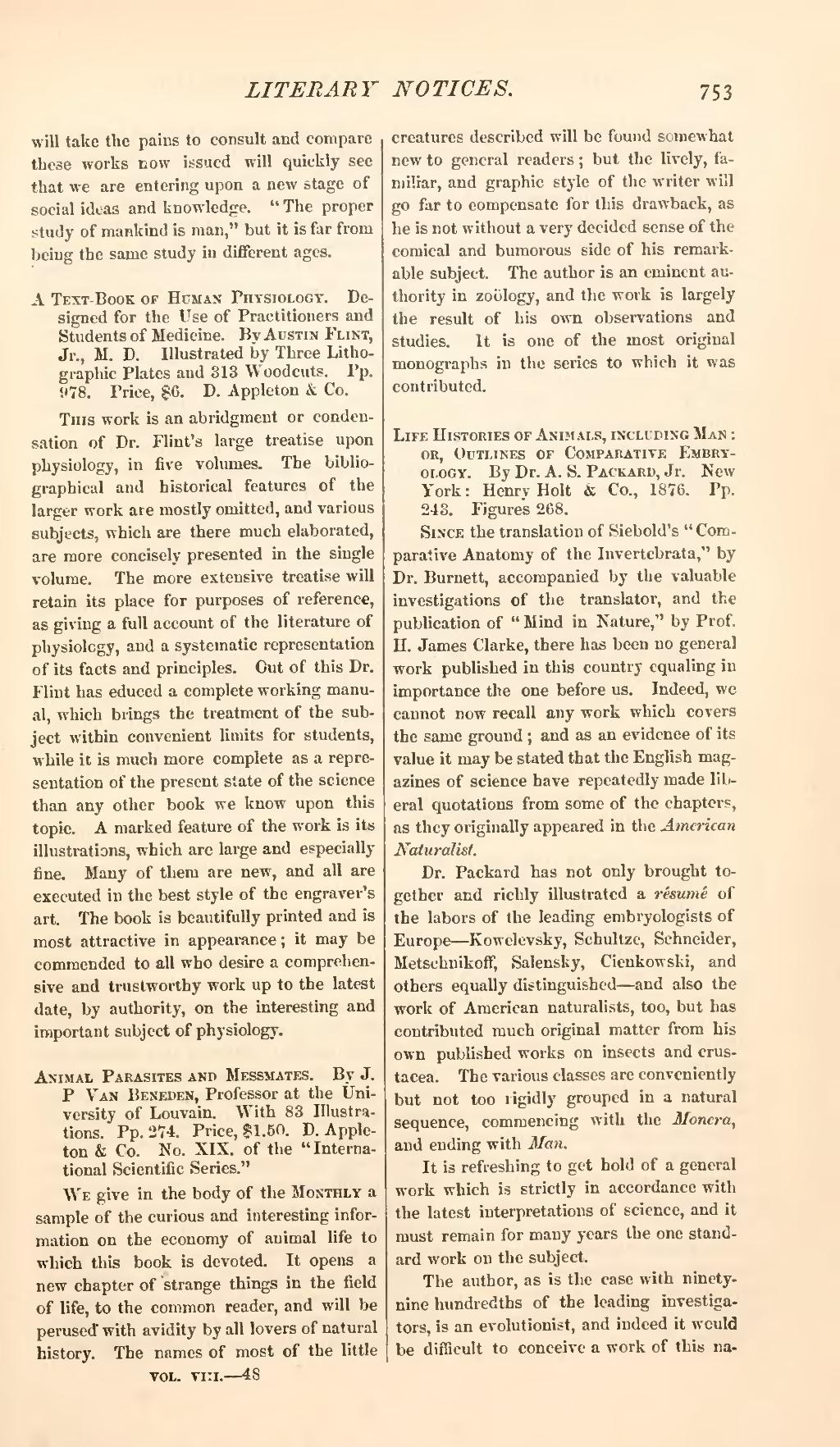will take the pains to consult and compare these works cow issued will quickly see that we are entering upon a new stage of social ideas and knowledge. "The proper study of mankind is man," but it is far from being the same study in different ages.
A Text-Book of Human Physiology. Designed for the Use of Practitioners and Students of Medicine. By Austin Flint, Jr., M. D. Illustrated by Three Lithographic Plates and 313 Woodcuts. Pp. 978. Price, $6. D. Appleton & Co.
This work is an abridgment or condensation of Dr. Flint's large treatise upon physiology, in five volumes. The bibliographical and historical features of the larger work are mostly omitted, and various subjects, which are there much elaborated, are more concisely presented in the single volume. The more extensive treatise will retain its place for purposes of reference, as giving a full account of the literature of physiology, and a systematic representation of its facts and principles. Out of this Dr. Flint has educed a complete working manual, which brings the treatment of the subject within convenient limits for students, while it is much more complete as a representation of the present state of the science than any other book we know upon this topic. A marked feature of the work is its illustrations, which are large and especially fine. Many of them are new, and all are executed in the best style of the engraver's art. The book is beautifully printed and is most attractive in appearance; it may be commended to all who desire a comprehensive and trustworthy work up to the latest date, by authority, on the interesting and important subject of physiology.
Animal Parasites and Messmates. By J. P Van Beneden, Professor at the University of Louvain. With 83 Illustrations. Pp. 274. Price, $1.50. D. Appleton & Co. No. XIX. of the "International Scientific Series."
We give in the body of the Monthly a sample of the curious and interesting information on the economy of animal life to which this book is devoted. It opens a new chapter of strange things in the field of life, to the common reader, and will be perused with avidity by all lovers of natural history. The names of most of the little creatures described will be found somewhat new to general readers; but the lively, familiar, and graphic style of the writer will go far to compensate for this drawback, as he is not without a very decided sense of the comical and humorous side of his remarkable subject. The author is an eminent authority in zoölogy, and the work is largely the result of his own observations and studies. It is one of the most original monographs in the series to which it was contributed.
Life Histories of Animals, including Man: or, Outlines of Comparative Embryology. By Dr. A. S. Packard, Jr. New York: Henry Holt & Co., 1876. Pp. 243. Figures 268.
Since the translation of Siebold's "Comparative Anatomy of the Invertebrata," by Dr. Burnett, accompanied by the valuable investigations of the translator, and the publication of "Mind in Nature," by Prof. H. James Clarke, there has been no general work published in this country equaling in importance the one before us. Indeed, we cannot now recall any work which covers the same ground; and as an evidence of its value it may be stated that the English magazines of science have repeatedly made liberal quotations from some of the chapters, as they originally appeared in the American Naturalist.
Dr. Packard has not only brought together and richly illustrated a résumé of the labors of the leading embryologists of Europe—Kowelevsky, Schultze, Schneider, Metschnikoff, Salensky, Cienkowski, and others equally distinguished—and also the work of American naturalists, too, but has contributed much original matter from his own published works on insects and crustacea. The various classes are conveniently but not too rigidly grouped in a natural sequence, commencing with the Monera, and ending with Man.
It is refreshing to get hold of a general work which is strictly in accordance with the latest interpretations of science, and it must remain for many years the one standard work on the subject.
The author, as is the case with ninety-nine hundredths of the leading investigators, is an evolutionist, and indeed it would be difficult to conceive a work of this na-
